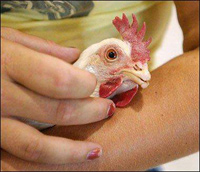



USDA survey to assess profit of poultry
US - For the first time ever, the U.S. Department of Agriculture is conducting a nationwide survey of poultry growers to figure out the cost and return of running a chicken farm. The federal government has until now gathered little information by itself on poultry growers' finances. The federal government has until now gathered little information by itself on poultry growers' finances. |
While the United States is the world's largest producer and exporter of chicken, there is little financial information available on poultry farmers.
"Broilers are probably the largest commodity we have not hit in the earlier surveys," said Jim MacDonald, who heads the USDA survey on poultry. "This is going to help us understand what types of broiler producers have better returns than others. It also helps us think about where the industry is going in the future."
The survey could provide valuable information for Delaware's $844 million poultry industry, which ranked seventh in the nation in the number of pounds of chicken produced in 2005, the latest data available. That year, the state's 634 broiler producers grew a total of 282 million birds for Perdue Farms, Allen Family Farm, Tyson Foods and Mountaire Farms.
Final results from the survey are due in early 2008.
The information from the survey will be particularly useful in Sussex County -- the county with the highest concentration of broilers in America.
"It will detail out a lot of expenditures data, which will allow growers to see what the averages are versus what they are actually incurring," said Chris Cadwallader, statistician at the state Department of Agriculture.
Poultry farmers spend a lot money on capital investment to build poultry houses and buy computerized systems to control the environment inside. The trend in the industry has been to build larger houses with up-to-date equipment, which can cost farmers on average $280,000 or more per house.
Besides capital expenditures, the survey would capture information on household income. Often, poultry farmers have multiple sources of income. Some grow grain or other commodities on the side, while others supplement their income with a job off the farm.
Source: delawareonline








